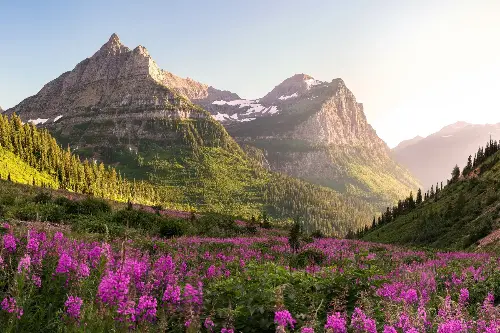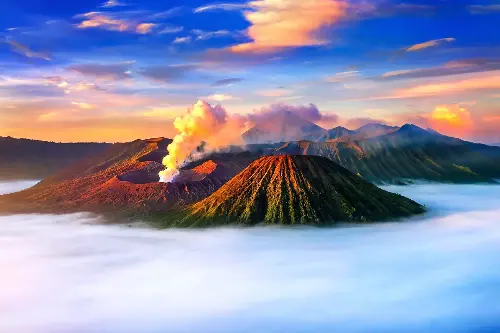Unearthing the Earth's Pillars: The Origin of Mountains

Mountains have stood as enigmatic sentinels throughout history, embodying awe-inspiring majesty, spiritual significance, and scientific intrigue. Their origins, which delve deep into the geological processes of the Earth, tell a story that stretches back millions, even billions, of years. They are the product of Earth’s ever-dynamic crust, where the colossal force of tectonic plates colliding, pulling apart, or sliding past one another moulds the landscape into these towering pinnacles.
The genesis of mountains is a tale of unimaginable timescales and forces. Take, for example, the Himalayas, the tallest and, perhaps, the most iconic mountain range in the world. This colossal range, home to the formidable Mount Everest, is the result of a continental collision that commenced some 50 million years ago when the Indian plate started to crumble against the Eurasian plate. As these two gargantuan masses of the Earth's crust pressed against one another, the land buckled, compressed, and folded upwards, giving rise to the Himalayan peaks.
Exploring the Mystical Mountain Narratives
Mountains are steeped in mythology, revered in numerous cultures, and worshipped as abodes of the gods. These narratives testify to the profound impact that mountains have had on human consciousness throughout the ages. In Greek mythology, Olympus was the lofty home of the Olympian gods. In Hindu belief, Mount Kailash is considered the sacred residence of Lord Shiva and is a place of great pilgrimage, despite its perilous accessibility. Meanwhile, Japan's Mount Fuji is an active stratovolcano and has long been celebrated in art and literature, symbolising beauty and immortality.
These mystical narratives provide more than just insight into historical perspectives on mountains; they reveal a deep connection between human beings and the natural world. Mountains have consistently been sites for contemplation, inspiration, and the pursuit of enlightenment, nestled in their majesty and isolation from the rest of society.
The Green Sentinels: Mountains and Biodiversity
Beyond their cultural and spiritual significance, mountains play a crucial role in biodiversity. Often described as 'biodiversity hotspots,' these grand structures provide unique habitats for a plethora of species adapted to the high altitudes, isolated environments, and varied climates the mountains afford. For instance, the Andes in South America harbour exceptionally diverse ecosystems, ranging from tropical rainforests at their base to the snow-capped peaks where only the hardiest of flora and fauna can thrive.
Mountains influence global biodiversity not only by providing diverse habitats but also by affecting climate and weather patterns. Their impressive elevations act as barriers to air circulation, creating rain shadows and microclimates that can lead to the evolution of endemic species found nowhere else on the planet.
The Sleeping Giants: Dormant Volcanoes

Many of the world's mountains are dormant volcanoes, which bear witness to the Earth's fiery internal engine. These silent behemoths still hold the power to awaken from their slumber and reshape landscapes. Volcanic mountains such as Mount St. Helens, whose catastrophic eruption in 1980 became a defining moment in volcanic research, holds essential clues to understanding our planet's geological activities.
Dormant volcanoes present an invaluable opportunity for scientists to study the inner workings of Earth's geology. By monitoring seismic activity, gas emissions, and ground deformation, researchers can gain insights into magmatic processes that could one day save lives by predicting future eruptions.
Conquering the Colossi: The Human Spirit and Mountains
The human fascination with mountains extends beyond their visual splendour and natural significance. Mountains pose a physical and mental challenge that has attracted adventurers and explorers for centuries. Sir Edmund Hillary and Tenzing Norgay's monumental ascent of Mount Everest in 1953 stands as a testament to human fortitude, igniting a passion for mountaineering that continues to captivate thousands.
Conquering a mountain's peak is often seen as a metaphor for personal achievement and overcoming life's figurative mountains. The lessons experienced in these climbs, such as the importance of perseverance, preparation, and respect for nature, translate powerfully into everyday life, underscoring the inspirational power these geological giants contain.
Our Geological Heritage: Protecting the Future of Mountains
As enduring features of our planet, mountains demand our respect and conservation efforts. The changing climate poses significant threats to these majestic landscapes, with glaciers receding at alarming rates and ecosystems facing disruption. It's imperative that we understand the delicate balance of mountain environments and the critical need to protect them against the adverse effects of human activities and global warming. Efforts such as sustainable tourism, habitat conservation, and international agreements on climate action are vital to safeguarding these geological wonders for future generations.
In conclusion, mountains stand as nature's sentinels—markers of geological time, mystical narratives, biodiversity refuges, peaceful havens, formidable challenges, and heralds of environmental change. Their ancient origins illuminate the deep past of our planet and remind us of the interwoven tapestry of life that spans beneath our feet and above the clouds. By learning about and from these towering titans, we not only enrich our understanding of the Earth but also gain perspective on our place within its vast, ever-unfolding story.
